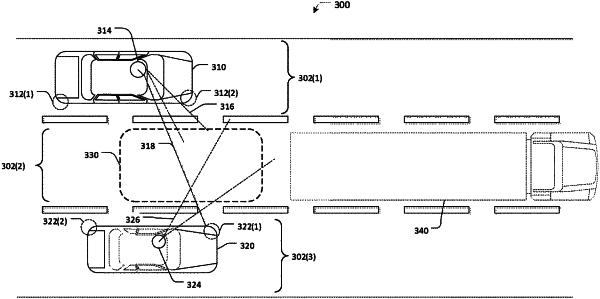| CPC B60W 30/09 (2013.01) [B60W 30/0956 (2013.01); B60W 40/08 (2013.01); B60W 50/14 (2013.01); B60W 60/0015 (2020.02); B60W 2540/225 (2020.02); B60W 2540/227 (2020.02); B60W 2552/00 (2020.02); B60W 2554/404 (2020.02)] | 17 Claims |

|
1. A computer-implemented method comprising:
receiving, from a sensor of a vehicle, sensor data of an environment;
generating lane change data for one or more other vehicles in the environment associated with an unoccupied lane position, the lane change data including a head position and an eye gaze direction of each driver of the one or more other vehicles;
determining, based on the lane change data, a likelihood of the one or more other vehicles attempting to change lanes into the unoccupied lane position;
generating a collision risk value based on the likelihood of the one or more other vehicles attempting to change lanes into the unoccupied lane position by assigning a first weight value to the head position and assigning a second weight value to the eye gaze direction; and
providing, based on the collision risk value, a collision risk notification to a driver of the vehicle or an advanced driver assistance system (ADAS) of the vehicle.
|